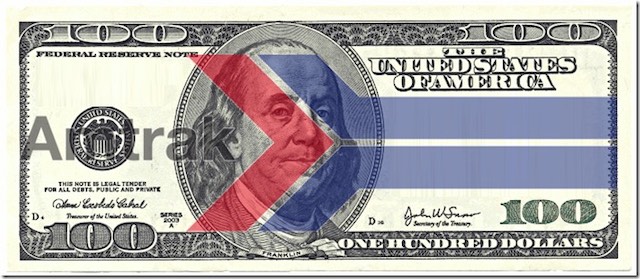“Flush with cash” from the 2021 infrastructure bill, says the Wall Street Journal, Amtrak hopes to “double ridership by 2040.” That’s an ambitious goal, and yet one that is totally insignificant.
Amtrak’s logo looks like a pointless arrow, but the real point is to spend lots of money.
Amtrak carried 5.1 billion passenger-miles in 2022. Divide that among the 332 million Americans and Amtrak carried the average American 15 miles. That compares with 16,000 miles of per capita travel by automobile and more than 2,100 miles by domestic airline. The Census Bureau expects the nation’s population to rise to 373 million by 2040, so even if Amtrak could double ridership, which is unlikely, per-capita intercity rail travel would grow to only about 27 miles per year. In other words, Amtrak will still be irrelevant to most Americans.
Of course, the cash from the infrastructure bill alone won’t be enough for Amtrak to double ridership. That’s because that most of that cash can only be used for capital improvements. Someone is going to have to pay to operate the money-losing trains. In 2022, Amtrak required $1 in operating subsidies, not counting depreciation or capital costs, for every $2 in passenger fares. For comparison, subsidies to airlines are only about 6 percent of the cost of air travel and subsidies to highways are just 4 percent of the cost of driving.
To pay the costs of operating trains whose capital costs were funded by the infrastructure bill, Amtrak is counting on support from the states. So Amtrak’s snake-oil sales people are visiting states and promising great glories if the states will pony up tens of millions of dollars in operating funds.
In Wisconsin, for example, Amtrak wants the state to subsidize new Milwaukee-Green Bay and Milwaukee-Madison trains as well as extra Milwaukee-Chicago and Milwaukee-St. Paul trains. These will not be high-speed rail: the Milwaukee-Green Bay train is expected to “take just under 3 hours” for a trip that takes only about 2 hours by car.
For those who don’t have cars, these routes are well served by Greyhound, Flix, Jefferson Lines, and Megabus. Not only are buses more frequent and charge fares that are lower than Amtrak, but they go to more destinations. Amtrak trains stop at just one location in the Twin Cities area, the St. Paul Union Depot. Buses go to St. Paul, but they also go to the airport, to downtown Minneapolis, and to the University of Minnesota. Best of all, they don’t require state operating subsidies.
Amtrak uses ridiculous arguments to justify state subsidies. Its Wisconsin plans, says the state-owned company, will have “a $2.3 billion economic impact” because that’s how much it might spend in the state. Anytime you substitute a high-cost good for a low-cost good, you have an economic impact — but is that impact positive or negative? Would spending $100,000 on a Yugo have a positive impact when you could have gotten a Prius for only $25,000? If you think so, then Amtrak has a train to sell you.









So … lets assume that Amtrack
Start again …
Lets assume that Amtrak projects are part of a full-employment or welfare program. How much less would they cost if the people who would be employed by this project were simply given a monthly check without spending any money on materials or equipment or real estate or other hard goods.
If we’re gonna have a welfare state, let’s not hide it under a railroad crossing.
Whey you divide the absurd $66 billion taxpayer gift Amtrak got by 332 million, you get almost $200 paid by the average American. But, when you divide the 31.7 million trips Amtrak carried (in its best year ever) by 332 million, you get one tenth of a trip taken by the average American…a round trip every 20 years.
Amtrak is a poster child for the concept of Concentrated Benefits, Diffused Costs.
If Amtrak is going to double it’s ridership, it needs to do it where people live like LA, Boston, Phoenix, et al.
Spending billions to add train service to Mobile, Duluth and Green Bay ain’t going to do it.
Amtrak’s lieing.
amtrak already services boston and LA. But if you mean cross country express routes it cant compete right now since we have basically no HSR. They exist but it needs intermediate connections and already takes like 3 or 4 days and thats without any delays from PSR freight.
Does the cost of driving include road maintenance? If it does is it only counting such at the federal level? I need sources for these numbers.